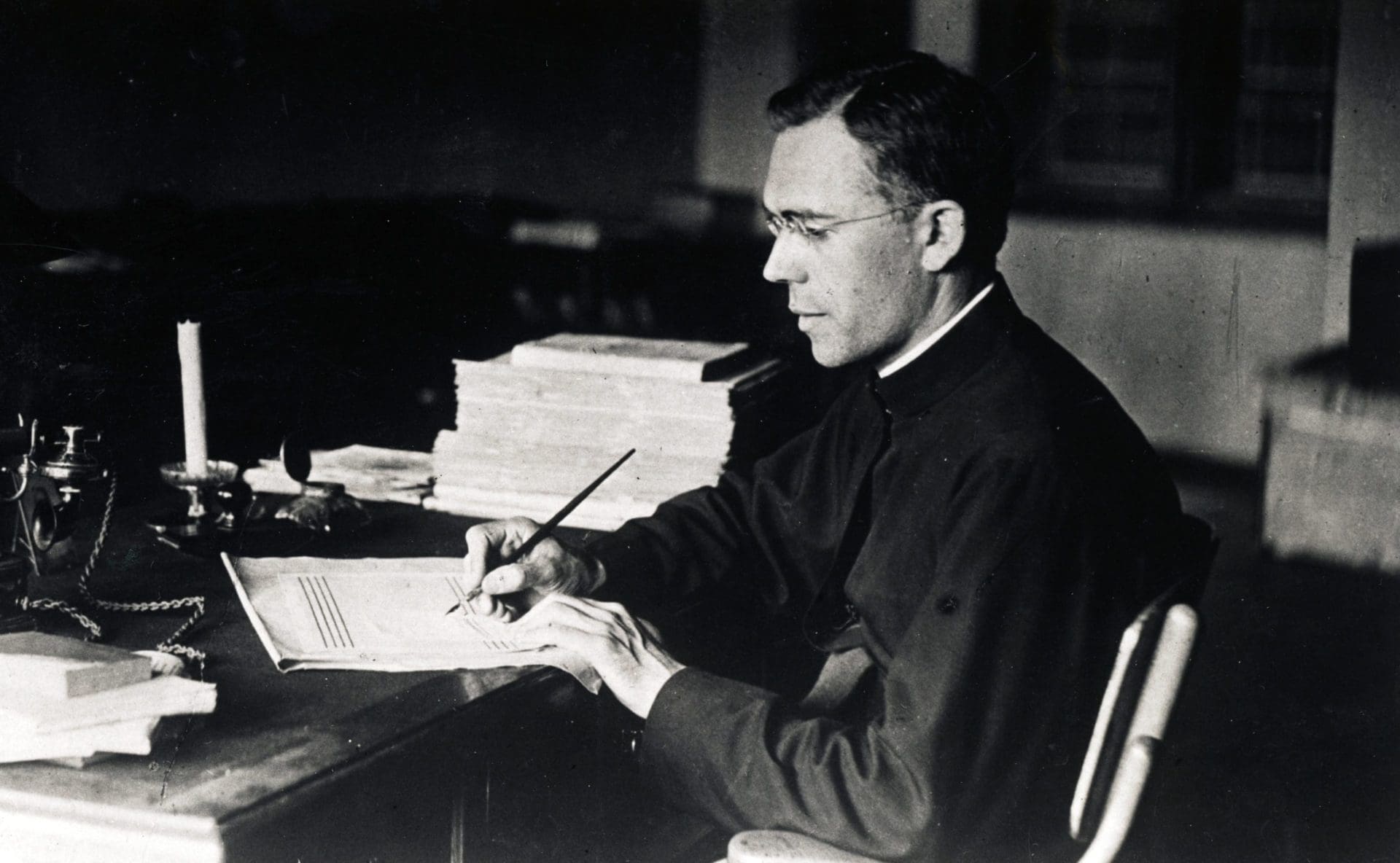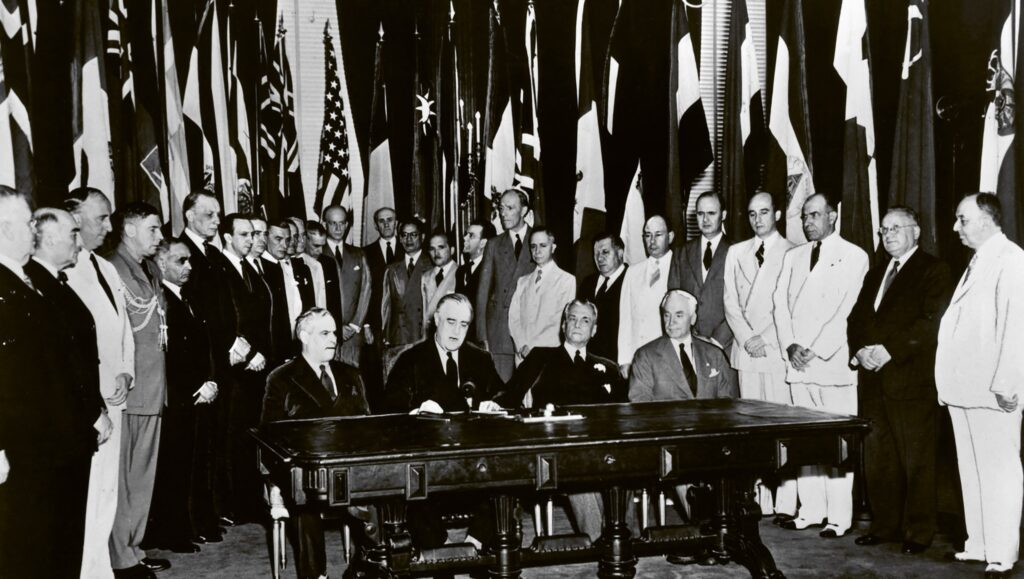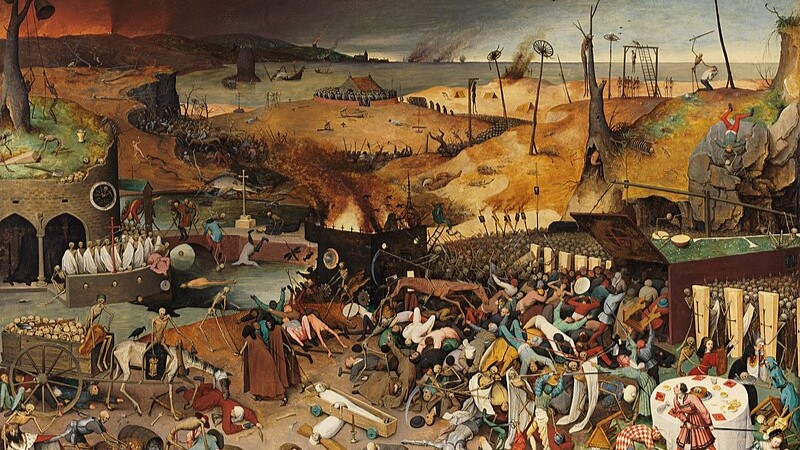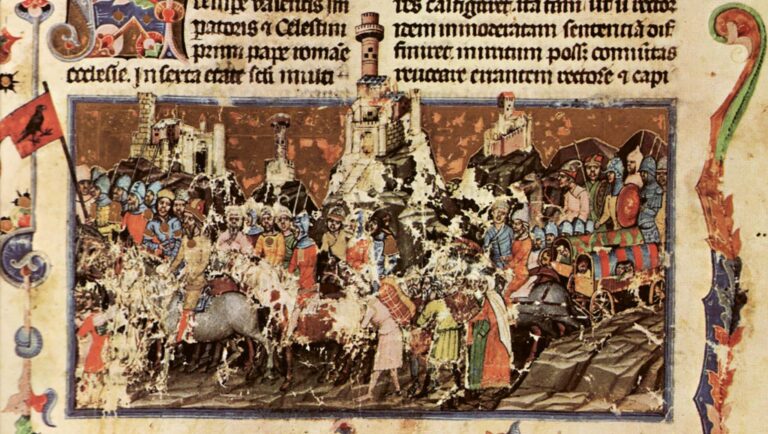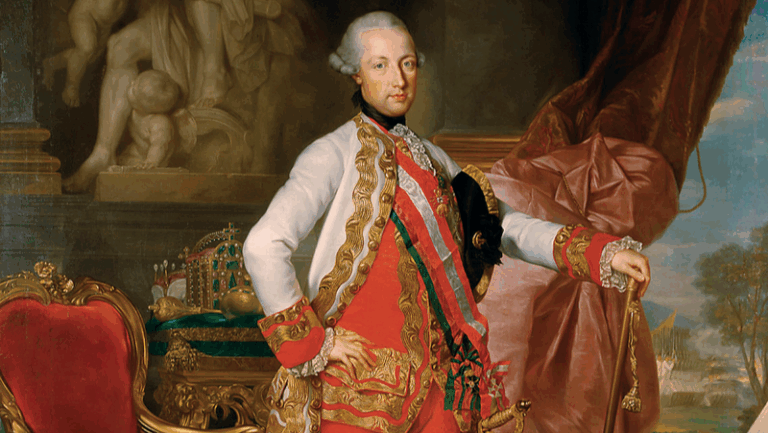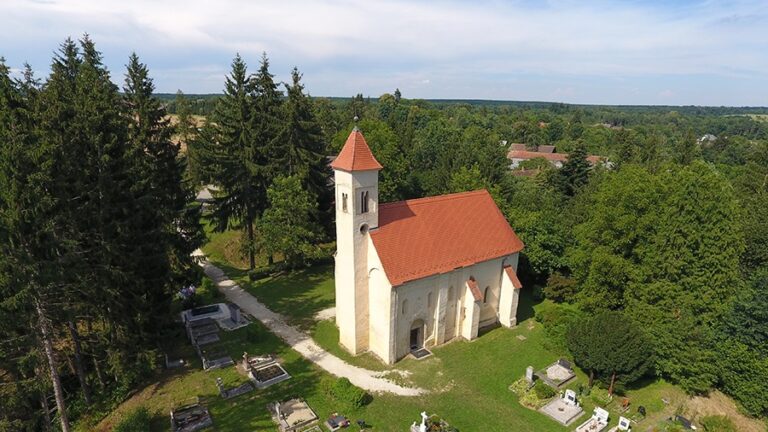To this day, Jesuit friar Béla Bangha, who became famous between the two World Wars for having revived Christian Hungarian public life, is notorious for his anti-Semitism, but his works are much more complex than the image we have today. The friar, when he felt the need, also lashed the Hungarians, criticizing “the Hungarian sluggishness and vulgarity”, and was in fact an anti-Nazi author. Bangha, for all his faults, deserves a fair reappraisal.
A clear assessing of Bangha’s career is hampered by a multitude of contemporary and subsequent misunderstandings: his own fierce language gave room for a one-sided picture of his work, and many of his followers, as followers in contemporary extremist movement, made no attempt to give an authentic picture of the priest after his death in 1940. And not so much objectivity could be expected from the historiography of the pre-1989 socialist system.
The latter include the flogging of racial theory, strong anti-Nazism, and partial criticism of the role of the state
Many will remember his strong anti-Semitism, radical language, or even anti-Protestantism, while other aspects of his career will fade. The latter include the flogging of racial theory, strong anti-Nazism, and partial criticism of the role of the state, an important point during the heydays of Nazism and Soviet Communism. Here I attempt to present some forgotten – or falsified – details of Bangha’s thinking, primarily based on his not so well-known writings. Without attempting to absolve the pater of the – legitimate – accusations of extremism, anti-Semitism, or wrong sentiment towards non-Catholic people, other things that are part of the his entire career should also be discussed.
Let us take Bangha’s most detailed anti-Nazi essay, entitled An Unused Army, as an example. It was written in 1939, and as a background of the writing, it is worth knowing that many Catholic authors of the era rejected Nazism as an “neo-pagan” ideology opposed to Christianity. In his writing, he emphasised the role of the laity and secular Catholic institutions: as he wrote, his goal was “to rally a whole new army to protect the Christian kingdom.”[1]
His essay goes on: ‘This is our starting point: the great tasks of Catholic advancement in this crucial period cannot be solved without a whole series of certain grand and innovative works that lie far beyond the purely pastoral responsibilities. Indeed, much of the masses today have been driven so far away from the Church, and religious truth, by the spirit of the age that through mere pastoral and school work […] we are only expressing relatively small influence upon them […] Think of the multi-million, partly intellectual masses of neo-paganism […] [In these cases] even the most flaming pastoral zeal is wasted. […] The hands of the priest are tied by the public force and the neo-pagan drive of current powers, his words are muffled by force […] and the neo-pagan ideas are spread through state power.’[2]
Although Bangha was still talking about Germany at the beginning of the article, he added that it would be “too easy” to believe that such a situation could not develop in Hungary. As he wrote, we once had a Soviet Republic in 1919, and then we could see how deep the country could sink. In addition, Hungary is “mimicking every political change in the world” and, consequently, Nazism “can be brought to power here in a matter of seconds”.
The lines of the pater, knowing the subsequent history of the Nazi occupation and the Arrow Cross takeover, give a visionary impression: ‘Neo-paganism is also possible in our country, and we must therefore be prepared for the attacks that are already frequent, as if the enemy were already on our necks, and the masses were already oriented towards new signs, not the cross of Christ. When the catastrophe is over our heads, all precautionary measures are useless anyway; the dam does not have to be built when the flood is already here […] then it will be too late to reflect on what we should have done to prevent the unexpected rupture of the dam.’[3]
Similarly, little was known previously about Bangha’s attitude to the issue of racial anti-Semitism. Yet at the time of the death of the pater, an interesting obituary appeared in the columns of the Zionist Jewish newspaper in Kolozsvár, named Új Kelet. Ferenc Jámbor, the editor of the paper, wrote that: ‘Now that Father Bangha is dead, one of the most ruthless enemies of Hungarian anti-Jewish legislation and racial theory has been buried. No, that’s not a typo. Indeed, the most ruthless opponent of racial theory has died.’[4]
All of this may seem very odd, and the reason for this is that Bangha’s works were falsified by its first processors – Bertalan Bíró and Zoltán Nyisztor – according to their own far-right tastes. A particularly clear sign of this is that Bangha’s 1921 discussion on anti-Jewish prejudice (titled Anti-Semitism and the Old Testament) was completely rewritten, but without any indication of the changes, in Bangha’s collected works. The article, re-published as The Old Testament and the Defenders of the Race [Fajvédők], originally debates Lutheran racist author Sándor Kiss, but includes the lines – never actually written down by Bangha – ‘From a Christian moral point of view, anti-Semitism, as long as it does not exceed the limits of justice and the love obligatory for sinners, is not only not to be blamed, but must be approved.’[5]
This version of the article completely omits Bangha’s charges against racial anti-Semitism. In his original writing, Bangha explains his specific theory (after clarifying that he himself considers Judaism a race): ‘If we want to explain the moral and spiritual inferiority of Judaism on a purely racial basis, we will immediately get into trouble because, based on the vast studies of Baron [Hugo von] Kutschera, it is quite likely that our Jews, at least those who are German or those who came to us from Russia-Poland are not only not of Semitic origin, but are straight Khazars, that is, the branches of the Finno-Tatar tribe, and thus – unfortunately – our sweet, close relatives in terms of blood and origin. These are not the descendants of the true Jews, the Spaniards or Sephardim in Palestine, but the Ashkenazim, of the Uralic Altai who adopted the Jewish religion and morals about a thousand years ago! So they are actually close to us in their origin.‘[6]
These lines show several things to the reader. First, Bangha was obviously an antisemite, as his article was still a condemnation of Judaism, that is, the Jewish faith. This was to some extent in line with Catholic teachings before the second Vatican council, but nevertheless showed little religious tolerance. Also, Bangha here confirms his faith in a now discredited theory, namely that Ashkenazi Jews are not ethnically Jews, but Khazars who adopted the Jewish faith. This theory was actually popular among Jewish authors in this period, as they sought – much like Bangha – to discredit racial antisemitism. Yet Bangha clearly stood up against racial antisemitism in his essay, a fact that was probably very problematic for the publisher of his collected works between 1940 and 1944.
Bangha clearly stood up against racial antisemitism in his essay
But his 1921 essay was even more interesting. If, of course, he accepts that there are “specifically Jewish sins and faults,” the question arises as to whether Bangha has seen racial faults in the Hungarians and other nations as well. The answer, perhaps surprisingly again, is yes: in the same article he explains that Hungarians also need Christianity to correct the inherent racial disadvantages of the Hungarian race, namely the “pagan instincts”, the “arrogance, disunity and indiscipline, the cherishing of sensual passions and the frequent lack of religion”. The successful conversion, 900 years ago, of the Hungarian people, “this half-naked people”, which gave the world some many saints, was described by the patron as a kind of “new Pentecost”.
Thus having analysed only a few segments of Bangha’s works, it is immediately clear that the “Arrow Cross-friendly, racist anti-Semitic pater’s” image was far from real in the historiography of the past Communist system and in some of today’s authors. The work of Bangha is worth looking at as a whole, placing his writings in the context of the age but it is still necessary to read them with a critical eye. And although the essays above obviously presented only a part of Bangha’s writings – my article was not written for the sake of completeness – the examined phenomena may in themselves show the swampy terrain and difficult tasks of judging the period between the two World Wars.
[1] Bangha Béla, ‘Egy fel nem használt hadsereg’, Magyar Kultúra (1939), 13-14; 3–7.
[2] Bangha, ‘Egy fel nem használt hadsereg’
[3] Bangha, ‘Egy fel nem használt hadsereg’
[4] Jámbor Ferenc, ‘Bangha páter halálára’, Új Kelet, (1940), 3.
[5] Bangha Béla: ‘Az ószövetség és a fajvédők’ (1921). In: Bangha Béla összegyűjtött munkái. Ed. Bíró Bertalan. Budapest, Szent István Társulat, (1940–1942). Vol. XVIII. 256–259.
[6] B[angha] B[éla], ‘Antiszemitizmus és ószövetség’, Magyar Kultúra (1921/8), 232–236.

